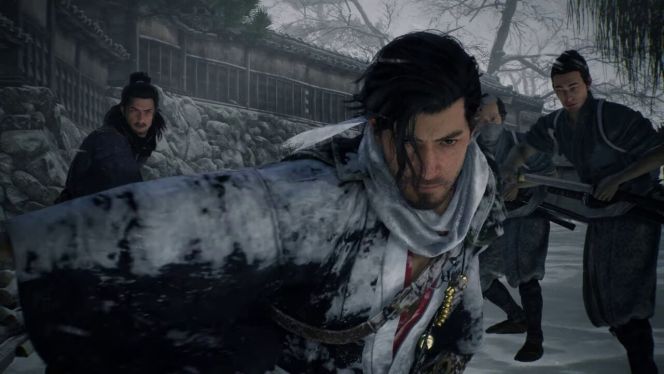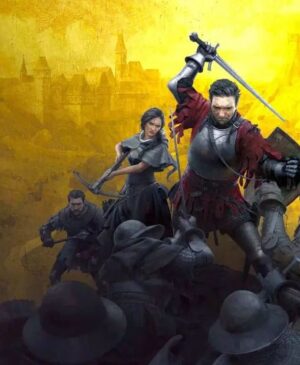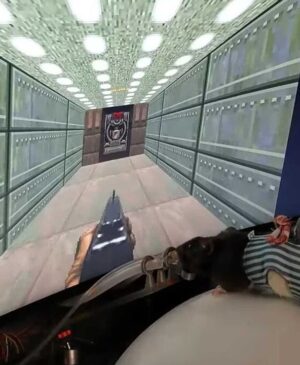Meanwhile, Team Ninja and Sony Interactive Entertainment have also detailed how late 19th century Japan has been recreated in the open-world action-adventure.
Check out the new details on the PlayStation Blog. The story takes place in Bakumatsu, Japan, a time of great change brought on by the arrival of the Black Ships. During this time of turmoil, the story unfolds first in Yokohama, then in Edo (now Tokyo), and finally in Kyoto. Each of these three major cities is built as an open world where the inhomogeneous mix of newly introduced Western culture and traditional Japanese beauty is dramatically rendered in detail using new-generation graphics technology. Yokohama is the first major city visited by the anti-shogunate protagonist. In the Kannai area of Yokohama, where East meets West, you’ll explore Yokohama’s landmarks such as the U.S. Consulate, Chinatown, the Yokohama State Guest House, the lighthouse, and even brothels. As you travel around the outskirts of Yokohama, you’ll find yourself in a series of inn towns along the Tokaido Road, the most important route in Japan at the time, connecting Kyoto, the imperial capital, with Edo, the seat of the Tokugawa Shogunate. Kannai – Yamashita is an area overlooking the ocean in southeastern Kannai, while Yamate designates the cliff and upper town, and Yamashita the lower town. In accordance with the provisions of the US-Japan Trade Treaty, it is the site of the Foreign Settlement, where soldiers from various nations are stationed. Yamashita Park, now a popular tourist attraction, was built with rubble from the 1923 Great Kanto Earthquake and officially opened in 1930.
Kannai – Motomachi is an area in southeastern Kannai that experienced a significant population boom after the port of Yokohama was opened to foreign trade. Visitors to the area’s Chinatown will find various trinkets for sale and unique architecture characteristic of Chinese culture, such as the grand Kanteibyo Temple, a colorful temple dedicated to the ancient Chinese hero Guan Yu. The current Kanteibyo Temple is the fourth reconstruction of the temple after being devastated and destroyed several times by unforeseen events such as the Great Kanto Earthquake of 1923 and World War II, and continues to serve as the heart of Yokohama Chinatown. Edo is a megacity that serves as the base of the Edo Shogunate. The Kojimachi district is where the samurai residence surrounds and protects Edo Castle. You can also stroll through Asakusa to see Sensoji Temple and Azuma Bridge, Nihonbashi to see the famous Nihonbashi Bridge and rows of merchants’ houses, and other cultural districts such as Senzoku to feel the vibrant energy of the Yoshihara brothels. Asakusa is the heart of the city’s unique shitamachi culture, home to landmarks such as Azuma Bridge and Sensoji Temple, and has often been the subject of famous woodblock prints. The area’s vibrant energy remains unchanged today, making it one of Japan’s most popular tourist attractions.
As for Nihonbashi, its namesake bridge was built in 1603 and marked the starting point of five major roads. For this reason, it attracted large crowds and contributed greatly to the popular culture of Edo. It has been the subject of countless works of art, perhaps most famously The Fifty-Three Stations of the Tokaido, a series of woodblock prints created by Utagawa Hiroshige. The bridge, Nihonbashi, can still be found today and still serves as the starting point of Japan’s road network. For 1,000 years, Kyoto served as the political and cultural heart of Japan’s capital. To the north of Kyoto is the Gosho district, where a rebellion against the Tokugawa shogunate, known as the Kinmon Incident, took place. To the west are the Horikawa Ward, where orderly streets run along Nijo Castle, and the Mibu Ward, where the Roshigumi’s headquarters, the Mibudera Temple, is located. To the east are the Gion district, with its teahouses and shops, and the Higashiyama district, where the Kiyomizu-dera Temple and other famous sites are located. However, you’ll also notice that some areas of the Imperial City have lost their former glory to the turmoil of the Bakumatsu and have become neglected and abandoned.
Gosho is an area of land that includes the emperor’s palace and the mansions of the most prestigious aristocratic families. In addition to personal living and sleeping quarters, the emperor’s palace included lavish gardens and buildings dedicated to religious rites and learning. Occasionally ravaged by fire and rebuilt in the twilight years of the shogunate, it was in continuous use for over five hundred years. Most of the structures that remain today were rebuilt in 1855, preserving the original form of the Imperial Palace today. Mibu is an area south of Nijo Castle and northwest of Nishi Honganji Temple. In the center is Mibu Temple, which belongs to the Risshu sect of Buddhists. The name Mibu dates back hundreds of years, when it was written with different characters, meaning wetlands. Mibudera Temple was used as a training ground for Shinsengumi members. Today, the temple grounds include a bronze statue of Commander Isami Kondo and a tower with some of his hair, as well as a graveyard for the regiment’s soldiers.
You can quickly climb and traverse by throwing the grapple rope to a grappling point. It allows you to move to higher ground and can also be used in combat to grab enemies during battle scenes. You can call a horse by blowing into the Horse Calling Whistle. You’ll get to your distant destination much faster and more efficiently than by walking. As the game progresses, you’ll gain access to additional riding equipment and a wider variety of more powerful horses. Once you have acquired the glider, you can use it by falling from a high point to glide through the air. You can fly a long distance by holding it at a certain angle. The glider is also useful for infiltrating enemy territory from a high altitude without being noticed. The design of the glider was based on Ikkansai Kunitomo’s blueprint for the Abikiru. Kunitomo was an inventor and gunsmith of the late Edo period, best known for building Japan’s first reflecting telescope. His invention of the Abikiru is also believed to be the oldest airplane blueprint in Japan. Fast Travel Points, or Hidden Sword Banners, are scattered throughout the world, allowing you to instantly travel from one Hidden Sword Banner to another unlocked banner. The banners not only allow you to replenish consumables by contact, but also to update your party members and equipment during a mission. It also serves as a gateway for other players to join you in online multiplayer.
There are other activities as well, including somo missions with locals. Somo refers to those who are not samurai, including those who have given up their social status as samurai and become wealthy farmers, wealthy merchants, and local merchants. During Somo missions, you will be given special tasks by these locals if you possess certain items or have a certain level of relationship with them. As you play, you’ll encounter random in-game events called Preordained Fate. Depending on where and when they occur in the game, you may not experience the same event twice. Defeating villains improves public safety in bad areas. As you improve public safety, you will make deeper connections within the locale and its people. As you get deeper into the story, you’ll unlock different activities in different locations and have the chance to earn rewards based on how well you do in those activities. Training allows you to visit dojos in different regions and fight characters you’ve met before. Other activities include yabusame (archery on horseback), artillery training, and cat collecting, where you must find cats hiding in unexpected places. There will also be obstacle courses. In each area, some places cannot be reached using the standard traversal method. You’ll have to use your grappling hook or gliding device to reach the finish line, where you’ll find a special reward for your efforts, such as a treasure chest, a shrine, or a cat.
Rise of the Ronin will be available for PlayStation 5 on March 22.
Source: Gematsu, PlayStation Blog















Leave a Reply